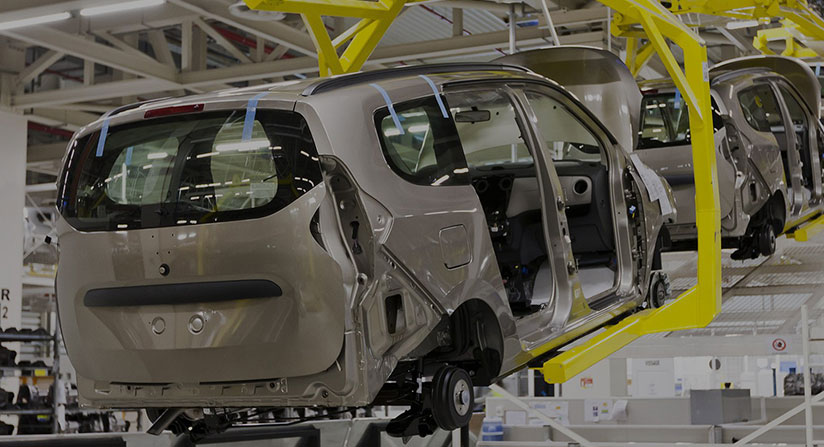The short answer is a resounding yes! You can be a 2-person job shop or a 5000-person aircraft manufacturer and lean manufacturing principles apply equally.
Lean manufacturing is a philosophy of continuous improvement (kaizen) with the goal of providing extraordinary value to the customer through a process of eliminating waste, (activities that do not add value), from every aspect of the operation. True lean manufacturing principles empower every individual in the organization to continuously improve value-generating activities and eliminate non-value-generating activities.
Back in 1980, Toyota introduced the concept of lean manufacturing. Their endeavor to work efficiently on waste management while increasing cash flow made this approach globally accepted. Presently, lean manufacturing is a part of internationally acclaimed companies such as Ford, Toyota, Parker Hannifin, Intel, Textron, and more.
What are the four Lean manufacturing principles?
The four Lean manufacturing principles are: pull, flow, takt, and zero defects.
Pull – The principle of allowing demand to pull products as opposed to forecasting to push. This minimizes overproduction and reduces working capital.
Flow – The principle of creating a work in process that smoothly flows through production with minimal or no interruption.
Takt – Takt is a German word that means beat or timing. In a lean manufacturing context, it is the pulse or the heartbeat of production. The rhythm is determined by customer demand and can be adjusted to respond flexibly to changes.
Zero Defects – The principle of fixing problems immediately. Do not accept defects or pass them down the line. In this way, subsequent defects are avoided and quality standards are maintained.
If you embrace lean manufacturing principles and embody them in your work culture, they will guide you to adopt processes and activities best capable of maximizing efficiency, productivity, and profitability for your enterprise. So the question now becomes what actionable steps can you take to achieve these goals?
According to the Lean Enterprise Institute, the core idea behind “lean” is: “To maximize customer value while minimizing waste.”
What are the Seven Wastes of Manufacturing?
As described previously a waste (Muda in Japanese) is a process or activity that does not add value. These seven wastes are; transportation, inventory, motion, waiting, overproduction, over-processing, and defects. Lean manufacturing identifies seven common wastes which can be mitigated to improve profitability.
In practical terms, profit is your selling price less your costs. Your selling price is market-driven i.e. if your price is too high your customers go elsewhere and if you price too low the value perception of your product is diminished and eventually so are sales. So the only way to increase unit profitability is to reduce costs which require the elimination of all waste in the production process. Waste elimination increases customer satisfaction through on-time delivery, high-quality standards, and optimal price.
Transportation
This is the movement of materials from one location to another over farther distances than is necessary. Each unnecessary transportation adds costs and not value. Examples could be:
- Long distances between functional areas for work in process. Mitigate by developing a value stream map to establish the optimal layout for the plant floor.
- Long supply chains. Mitigate by sourcing raw materials closer to the factory.
Inventory
Excess inventory hides a myriad of sins. It ties up working capital, can get damaged in transit, takes up space, and can become obsolete requiring it to be written off. Bad inventory management can have significant negative consequences for any manufacturing enterprise. The goal under lean management principles is to have zero inventory by:
- Maintaining a continuous production flow
- Ordering raw materials only as needed
- Eliminating overproduction
Lean inventory management best practices offer tremendous opportunities for increasing efficiency and profitability.
Motion
This refers to any unnecessary motion taken by individuals, for example lifting heavy objects from the floor to a workbench. This induces stress and can cause injuries.
Waiting
Waiting disrupts flow and is one of the more serious wastes. It manifests itself in many ways:
- Waiting for delivery of raw materials
- Waiting for an instruction from a manager
- Waiting by an operator for the previous operational process to complete
- Waiting for a breakdown to be fixed
A majority of these issues can be fixed by applying continuous flow techniques and using standardized work instructions to ensure consistency of time and method for each production step.
Overproduction
Producing too much or too early is the cardinal sin. It leads to high levels of inventory and can mask many other problems. Long lead times, oversized batches, and poor planning are the main causes. It can be mitigated by:
- Pacing production to match customer demand
- Using pull manufacturing techniques
- Manufacturer in smaller batches
Overprocessing
Performing unnecessary processes or tasks not required by the customer. For example, machining a part with too tight a tolerance or painting areas that will never be seen or affected by corrosion.
Implementing Standard Operating Procedures with the built-in flexibility to accommodate specific customer requirements are critical to minimizing the adverse cost and time impacts of over processing.
Defects
Defects require rework or replacement. Defects can be caused by nonstandard operations, substandard raw materials, incorrect assembly instructions, poorly maintained equipment and poorly trained operators. Apart from the scrap costs there are many other hidden costs associated with defective parts which can include problem-solving, rework, rescheduling, increased lead times and setups. The rule of thumb is to multiply the cost of the scrap by a factor of 10 to get somewhere near the true cost. Mitigation protocols could be:
- Empowering operators to solve problems immediately
- Implementing error protection into design processes
- Root Cause Analysis
- Standard Operating Procedures
Accurate Data Provides Accurate Control
As stated in the introduction lean manufacturing is kaizen, or process of continuous improvement. It is not a one–time goal. Continuous improvement requires constant monitoring and analysis, and by far the most efficient means of doing this is by utilizing an ERP system. An ERP system will provide comprehensive, end to end, real-time visibility across your manufacturing enterprise. It will provide process flow transparency across all operational silos.
For example, pulling parts from stock and transporting to work centers would previously have been manually recorded on cards. Production operators would manually record items produced but not scrap created. At the end of the day the results of this error-prone process would be manually entered into a computer-based system.
In contrast an ERP system would track all material movements and operations using barcode scanners. It would provide an accurate and real time inventory status which removes the safety stock requirement to hedge against uncertainty. That working capital would be freed up for deployment elsewhere in the operation. This data is available to anyone, anywhere, at any time and on any device.
How can you apply lean principles to your manufacturing business?
The purpose of applying lean manufacturing principles in your business is to minimize waste and maximize productivity. Here is how you can design a simple plan for manufacturing system around the above mentioned eight wastes.
- Develop a continuous improvement culture in your organization.
It is important to spend 10% of your time on process improvement. The principle of Kaizen, as mentioned in the introduction, seeks aggregating the combined talents of all the employees, encourage them to boost productivity, and innovation.
- Set priorities and clearly define your strategy.
When you have a clearly defined metrics, it becomes easier to understand the driving agents that leads to company’s success. For example, forecasting, researching and strategizing about customers’ demand can make your sales go up rather than spending time on other tasks.
- Manage waste and inventory
Waste minimization is one of the primary goals of lean manufacturing approach. It is focused on reducing inventory levels to zero to promote customer service levels, efficiency and productivity.
How can lean manufacturing help my business?
Lean manufacturing principles offer significant opportunity to maximize the efficiency and profitability of any manufacturing enterprise whether small or large. However waste elimination requires accurate data tracking and manual data management is not up to the task. In order to gain full control over waste elimination accurate data tracking is required which can only be undertaken effectively with a manufacturing ERP system.
General FAQ
What are the four Lean manufacturing principles?
The four Lean manufacturing principles are: pull, flow, takt and zero defects.
What are the Seven Wastes of Manufacturing?
As described previously a waste (Muda in Japanese) is a process or activity that does not add value. These seven wastes are; transportation, inventory, motion, waiting, overproduction, over processing and defects.
How can lean manufacturing help my business?
Lean manufacturing principles offer significant opportunity to maximize the efficiency and profitability of any manufacturing enterprise whether small or large.
What are the main benefits of a lean system?
The benefits of lean manufacturing system include:
- Less process waste
- Reduced lead time
- Reduced inventories
- Improved knowledge management
- Lower costs
- Less rework
- Increased process understanding
- Improved knowledge management
Follow Us











